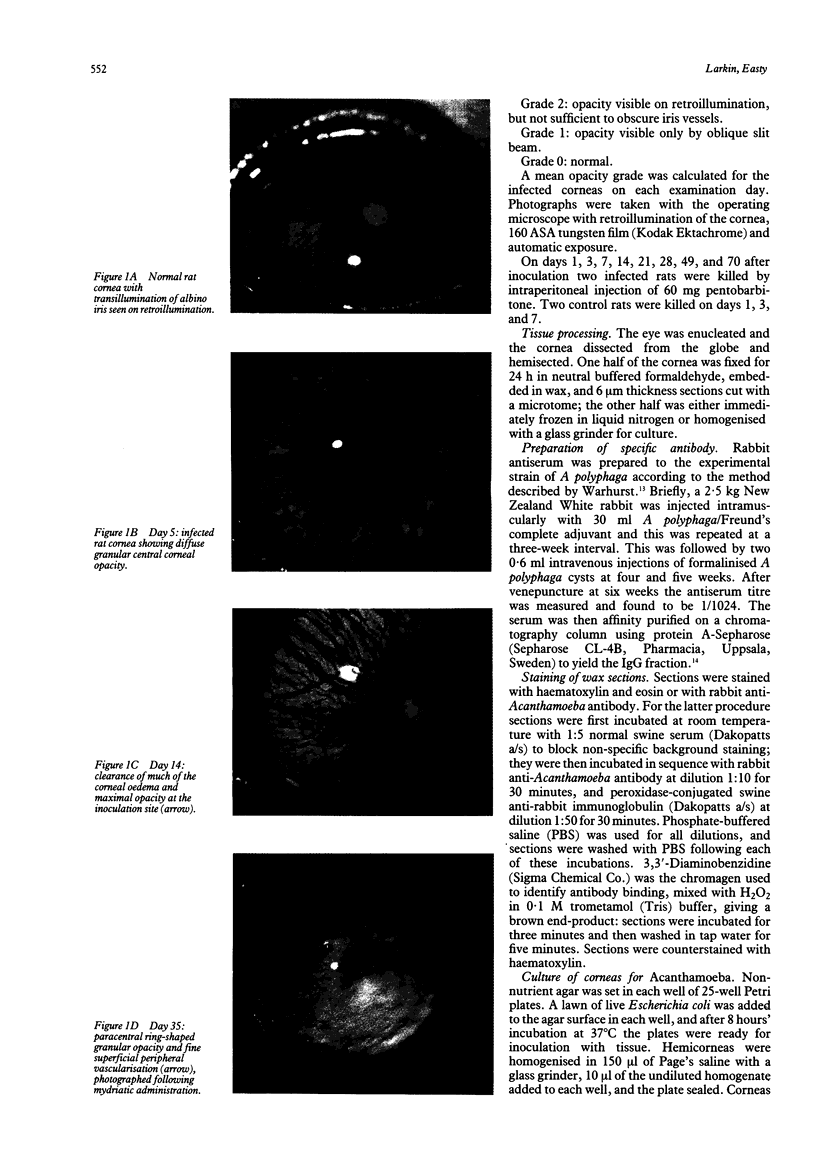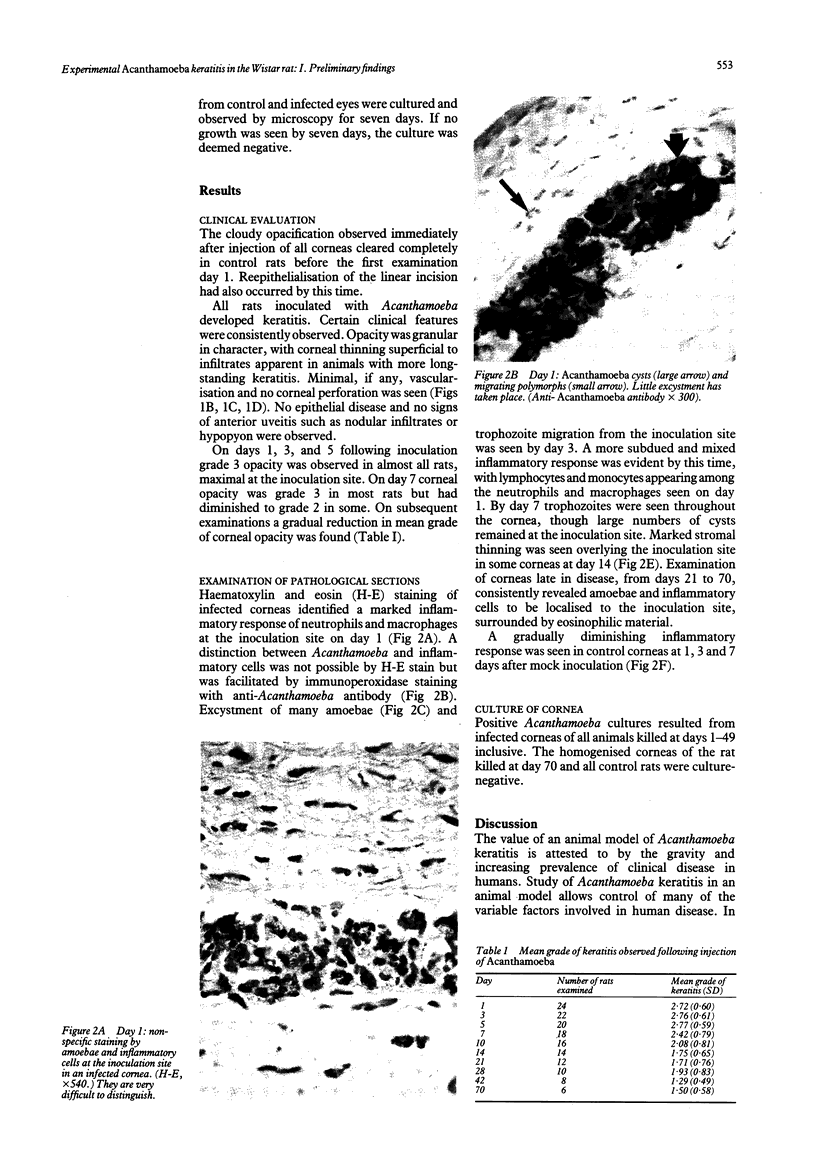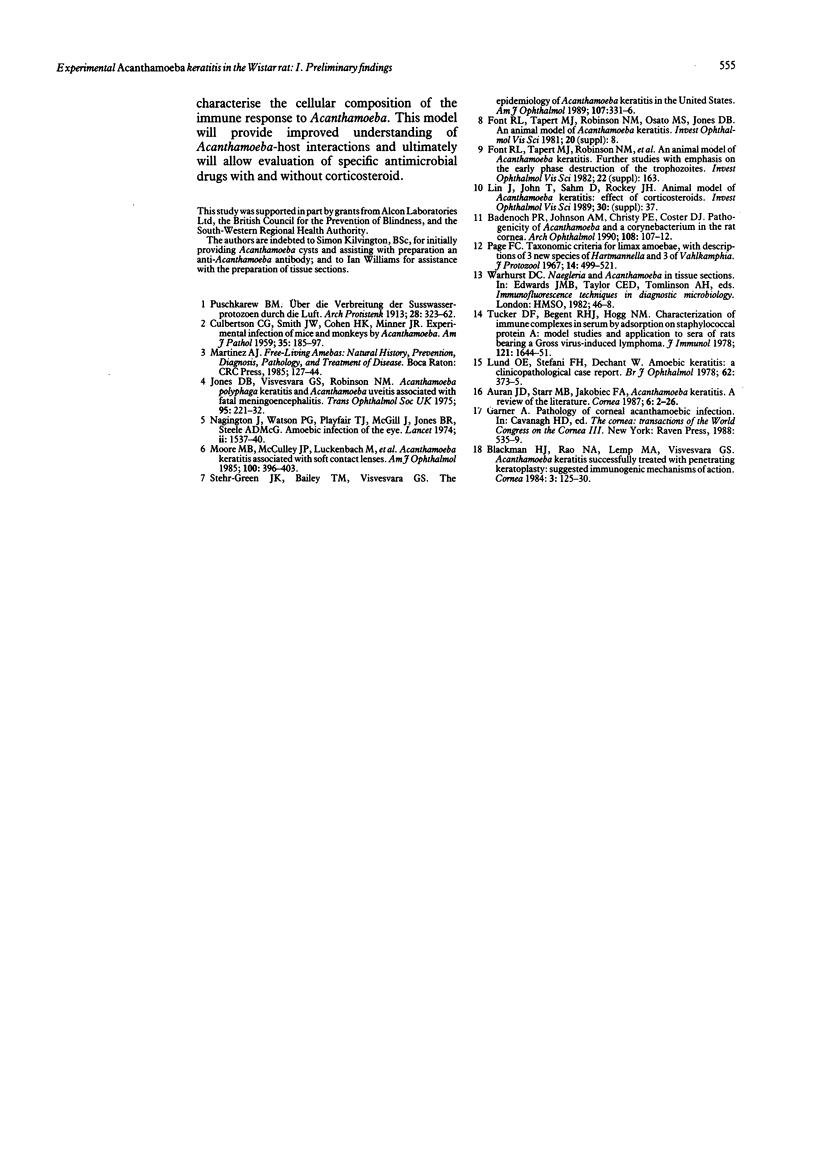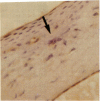Abstract
Experimental Acanthamoeba keratitis was induced in Wistar rats by intrastromal inoculation of Acanthamoeba polyphaga cysts. Keratitis developed in all corneas injected and was characterised by a diffuse granular opacity. The animals were examined for 70 days and a gradual reduction of keratitis was observed. Pathological sections showed liquefactive stromal necrosis and Acanthamoeba localised in deep stroma persisting to 70 days. A brisk inflammatory infiltrate of neutrophils and macrophages was seen in the early days of infection. Severity of keratitis was found to correlate with inflammatory activity in pathological sections. The uses of an animal model of Acanthamoeba keratitis are described.
Full text
PDF




Images in this article
Selected References
These references are in PubMed. This may not be the complete list of references from this article.
- Auran J. D., Starr M. B., Jakobiec F. A. Acanthamoeba keratitis. A review of the literature. Cornea. 1987;6(1):2–26. [PubMed] [Google Scholar]
- Badenoch P. R., Johnson A. M., Christy P. E., Coster D. J. Pathogenicity of Acanthamoeba and a Corynebacterium in the rat cornea. Arch Ophthalmol. 1990 Jan;108(1):107–112. doi: 10.1001/archopht.1990.01070030113040. [DOI] [PubMed] [Google Scholar]
- Blackman H. J., Rao N. A., Lemp M. A., Visvesvara G. S. Acanthamoeba keratitis successfully treated with penetrating keratoplasty: suggested immunogenic mechanisms of action. Cornea. 1984;3(2):125–130. [PubMed] [Google Scholar]
- CULBERTSON C. G., SMITH J. W., COHEN H. K., MINNER J. R. Experimental infection of mice and monkeys by Acanthamoeba. Am J Pathol. 1959 Jan-Feb;35(1):185–197. [PMC free article] [PubMed] [Google Scholar]
- Jones D. B., Visvesvara G. S., Robinson N. M. Acanthamoeba polyphaga keratitis and Acenthamoeba uveitis associated with fatal meningoencephalitis. Trans Ophthalmol Soc U K. 1975 Jul;95(2):221–232. [PubMed] [Google Scholar]
- Lund O. E., Stefani F. H., Dechant W. Amoebic keratitis: a clinicopathological case report. Br J Ophthalmol. 1978 Jun;62(6):373–375. doi: 10.1136/bjo.62.6.373. [DOI] [PMC free article] [PubMed] [Google Scholar]
- Moore M. B., McCulley J. P., Luckenbach M., Gelender H., Newton C., McDonald M. B., Visvesvara G. S. Acanthamoeba keratitis associated with soft contact lenses. Am J Ophthalmol. 1985 Sep 15;100(3):396–403. doi: 10.1016/0002-9394(85)90500-8. [DOI] [PubMed] [Google Scholar]
- Naginton J., Watson P. G., Playfair T. J., McGill J., Jones B. R., Steele A. D. Amoebic infection of the eye. Lancet. 1974 Dec 28;2(7896):1537–1540. doi: 10.1016/s0140-6736(74)90285-2. [DOI] [PubMed] [Google Scholar]
- Page F. C. Taxonomic criteria for limax amoebae, with descriptions of 3 new species of Hartmannella and 3 of Vahlkampfia. J Protozool. 1967 Aug;14(3):499–521. doi: 10.1111/j.1550-7408.1967.tb02036.x. [DOI] [PubMed] [Google Scholar]
- Stehr-Green J. K., Bailey T. M., Visvesvara G. S. The epidemiology of Acanthamoeba keratitis in the United States. Am J Ophthalmol. 1989 Apr 15;107(4):331–336. doi: 10.1016/0002-9394(89)90654-5. [DOI] [PubMed] [Google Scholar]
- Tucker D. F., Begent R. H., Hogg N. M. Characterization of immune complexes in serum by adsorption on staphylococcal protein A: model studies and application to sera of rats bearing a gross virus-induced lymphoma. J Immunol. 1978 Nov;121(5):1644–1651. [PubMed] [Google Scholar]







